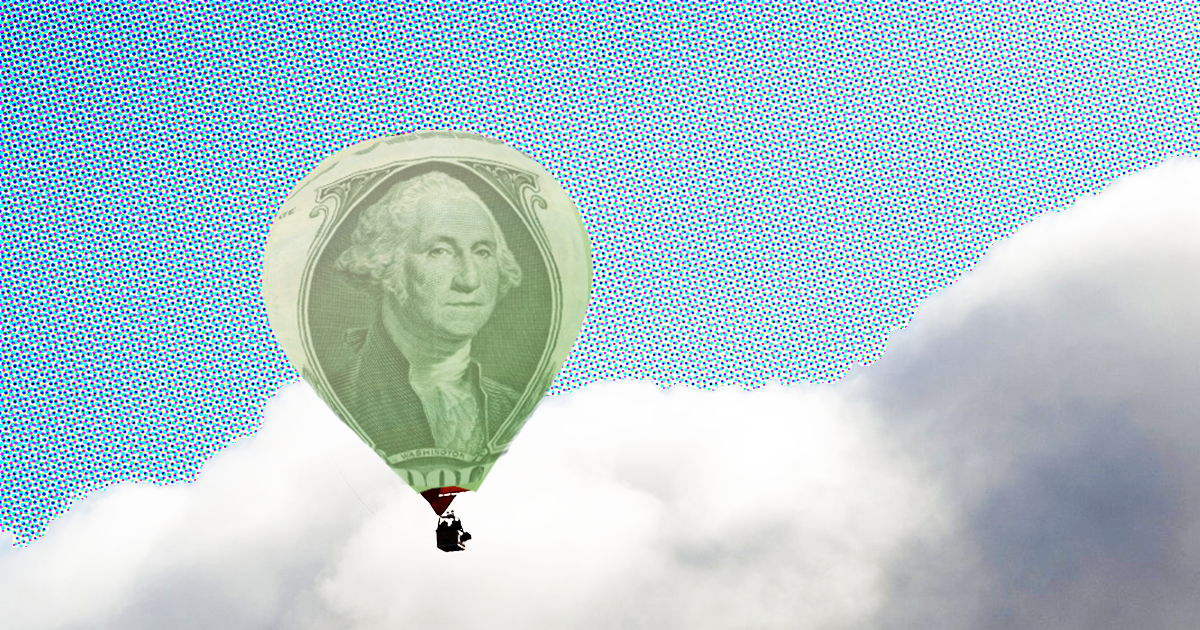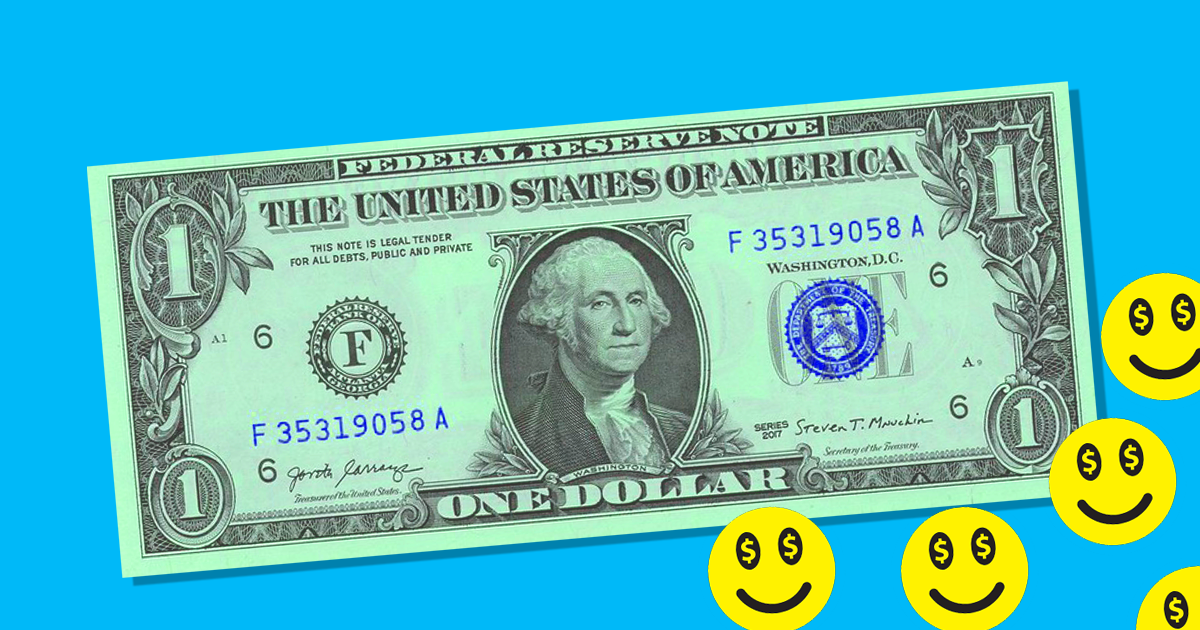There’s little doubt inflation is coming. By some measurements, it’s already here. The question is: How do you proactively hedge your portfolio against this value crusher?
If history is any guide, private real estate is the heavyweight champion of inflation hedging compared to alternative investments.
To better understand what lies ahead, we need to understand how we got here, and why real estate tends to perform well during periods of high inflation.
What is inflation?
Nobel prize-winning economist Milton Friedman once said: “Inflation is taxation without representation.”
That’s because inflation is primarily a function of federal policy on things like interest rates and price controls. These things have the ability to erode your purchasing power significantly, and the decision makers are appointed, not elected.
Inflation is often the product of increasing the supply of currency without a corresponding increase in economic output.
It’s important to understand that the value of anything is dynamic and relative. Economists assess the value of a currency against things like other currencies, the cost of goods, and asset pricing over time.
As costs increase – particularly on fundamental commodities like oil, timber, or metals – purchasing power decreases. Inflation is afoot.
How is inflation measured?
Economists have created several models to calculate the rate of inflation.
The federal government has two ways of measuring inflation. There’s:
Inflation rate: Poorly labeled, what is often referred to as the ‘inflation rate’ is actually an index that measures the rate of change in inflation compared to the previous period (year over year, for example).
Consumer price index (CPI): CPI is a calculation based on the prices of consumer goods across various sectors, such as the cost of energy, groceries, housing, etc.
CPI is the metric that impacts the average American directly, as it is based on recurring household expenses. As the cost of these goods rises, Americans feel the pinch.
In April 2021, Federal Reserve Chair Jerome Powell announced that the consumer price index had clocked in at 4.2% for the month.
That’s the highest monthly rate of increase since 2008 – and we all remember what happened in 2008.
Inflation on Wall Street
This increase was expected. The Federal Reserve printed trillions of dollars in order to address the economic fallout due to shutdowns ordered in response to COVID-19.
It’s hard to be economically productive in lockdown. As a result, the output of the United States (GDP) went down by 2.3%. Not bad, all things considered.
Yet, the S&P 500 – an index that reflects the 500 biggest companies in the U.S. – gained over 16% during the same period.
Peel back another layer of this onion and things get even more eye-watering.
Price-to-earnings ratios (PEs) are used to assess how expensive a stock is relative to the underlying company’s earnings. The higher the PE ratio, the more expensive the stock is.
Between January 1, 2020 and January 1st 2021, the S&P 500’s overall PE ratio jumped from 24.88 to 40.3. That’s just shy of a 40% increase.

Clearly, gains were not based on the improvement in performance of the S&P 500 companies, but on an influx of capital into the markets.
The logical explanation for this disparity is that a considerable portion of the newly minted greenbacks found their way into the stock market.
Stocks simply got more expensive. Investors need more capital to buy the same amount of shares they did in 2019 without the fundamentals of the companies backing that price hike. This discrepancy reflects inflation.
Inflation on Main Street
As asset and commodity prices increase, the purchasing power of the dollar declines.
It’s a sneaky force that debases the value of your savings account.
The cohort that ends up paying the heftiest price for inflation are wage and salaried workers – particularly if they don’t own assets that appreciate in value. Wages haven’t historically kept pace with inflation, let alone during years of elevated levels.
Put it this way: If you had $10,000 sitting in a savings account in April 2020, you’d need to have $10,420 in there now to buy the same amount of goods this year.
And that’s only if you trust the numbers reported by the Federal Reserve.
Other economists, including famed contrarian investor Michael Burry – who foresaw the 2008 Financial Crisis – believe the real rate of inflation is significantly higher than the numbers reported by the fed.

Real estate as an inflation benchmark
In addition to the S&P 500, the real estate market serves as a reliable benchmark for inflation indexing. That’s because the need for housing remains fairly consistent, and the supply grows slowly.
According to a report by Zillow, the housing market gained 7.4% in value during 2020. Furthermore, Zillow projects this trend will not only continue, but accelerate throughout 2021.
If you own property, that’s good news. Your net worth just grew by however much your real estate asset(s) appreciated.
If you don’t…you slipped 7.4% further behind on your journey to homeownership. That figure could well be 15% by the end of the year against the 2019 level.
Time to ask the boss for a big raise.
Considering the real estate market gained 7.4%, and the S&P 500 gained 16% in 2020, perhaps Burry is right to raise an eyebrow at the Federal Reserve’s reported CPI of 1.4% for 2020.
Inflation on the global stage
A hallmark of inflation is that the prices of commodities start to rise, particularly in assets where production of the supply has bottlenecks or lead times, and therefore grows slowly.
To understand this better, it can be helpful to think of the dollar itself as an asset.
After all, the global community certainly does. That is why many foreign governments hold large reserves of U.S. dollars.
Relative to other countries, the U.S. has enjoyed decades of growth and stability. Subsequently, the U.S. dollar has proven to be a reliable store of value, particularly relative to other volatile currencies.
However, the DYX –a measurement of the dollar’s value compared to a handful of other foreign currencies – has been melting like an ice cream cone on a hot summer day.
Because the U.S. dollar is the global reserve currency, a big slide in the DXY could prove especially catastrophic if foreign governments were to liquidate their holdings.
We don’t know, J.Pow, but those inflation numbers just aren’t checking out.
Why real estate thrives during periods of inflation
When it comes to inflation and real estate value, it’s a classic case of ‘a rising tide raises all boats.’
From an investment standpoint, an asset with a fixed or slow-growing supply, but steady or increasing demand, will gain value over time.
Building a house requires permits, materials, construction time, and financing. The growth in supply tends to be slow.
Constricting supply growth either further, the price of building materials for new homes have skyrocketed over the last year.
The cost of lumber, for example, exploded 130% to historic highs in 2020 alone. Steel and concrete are also experiencing sharp price increases.
That adds additional challenges to expanding supply. Meanwhile, thanks to the work-from-home and ecommerce revolutions, demand in several real estate sectors has skyrocketed.
Money printer go ‘BRRR’
Now, let’s sprinkle in that extra three trillion dollars that got injected into the economy in stimulus measures. That alone would have led to significant gains in the real estate market.
Let’s say we have a total economy worth $1,000,000, and a total of 10 houses in the real estate market worth $10,000 each.
If the same economy then prints another $1,000,000 – without a corresponding increase in economic output – the total economy is now worth $2,000,000. Those same houses are now worth $20,000.
Good if you owned one of those houses. Less than optimal if you didn’t, particularly if your bosses didn’t give you a 100% raise during the same time.
The U.S. did not double the amount of dollars in circulation like in the example above. But it illustrates the point that real estate appreciates in tandem with inflation.
Interest rates, the accelerant
Despite shutdowns and high levels of unemployment, the real estate market gained more value in 2020 than it had in any other year since 2005.
Part of that is that the borrowing costs of money have been historically low. Borrowing money is easy and cheap, enticing more potential buyers into the market.
Institutional investors take advantage of these low rates by borrowing at 0% and investing that money into assets that yield 5% or more – like the real estate market, because hell, why not?
Real estate is an attractive investment to whales, because it can generates income in the form of rent from the jump. Rent prices increase with the value of the leased real estate. (Brace yourselves, renters).
By setting up REITs, institutional players can optimize yields through corporate tax exemptions.
Given that the Central Bank recently said they wouldn’t hike interest rates in the near term, the real estate market’s value appreciation is slated to continue as interest-free investment capital flows in.
This adds more weight to the demand side of the equation.
Get your slice
You may have caught on already, but there are winners and losers when it comes to inflation.
The winners own assets and investments that appreciate substantially without any extra effort on their part.
Unfortunately, waged and salaried workers whose pay doesn’t keep pace with rising commodity prices get pinched. Their purchasing power is increasingly eroded. The average 2–3% annual raise fails to reconcile the decline of the dollar’s purchasing power.
With indicators of inflation already flashing code red and graphs moving into exponential inclines, investing in real estate can protect your net worth against erosion in value.
Even if you’re not in a position to buy property, you can enjoy the market’s gains by investing in REITs like HappyNest, for as little as $10. From there, it’s entirely up to you how much you want to invest, every dollar of which carves out your stake in the real estate market and its future gains.
Getting on the right side of inflation
HappyNest generated 5%+ returns every quarter – for a total of over 20% compounded annualized return – for its shareholders in 2020.
Our shareholder ROI outpaced both the S&P 500 and the overall real estate market’s gains, even accounting for the influx of capital and inflation.
As HappyNest’s portfolio of properties appreciates in value, so will your investment. While investing always comes with risk, HappyNest’s properties currently have reliable tenants like FedEx and CVS on 8- to 10-year lease agreements. We don’t anticipate any interruption of dividend payments. We expect to have ample time to react in the event of an unexpected vacancy.
Learn more about the properties in our portfolio.



